Lintneria justiciae, Itanhandu, southeastern Minas Gerais, Brazil
Larry Valentine
The following larval images from southeastern Minas Gerais, near border with other Brazilian states of Rio de Janeiro and Sao Paulo,
have been sent to me by Larry Valentine.
I believe they are of Lintneria justiciae but we are hoping for eclosion of adult moth to verify identification.
Larry described the plant upon which they were feeding as very pungent. He took a photo of the plant and sent it to James P. Tuttle who sent it to
the Royal Botanic Gardens Kew (England) who identified it as Hyptis sidifolia (= H. umbrosia) (Lamiaceae). Not a Salvia, but close.
"Bill:
I just wanted to thank you again for recognizing the significance of Larry's larval shots and letting me know. The bad news is that all four larvae were parasitized.
The good news is that I suggested he revisit the site at dusk with a flashlight and his wife found what "seems" to be a healthy 5th instar larva ascending to feed.
Fingers crossed... I'll let you know how it progresses. We will be writing a paper regardless of how it plays out and the importance of your site will be noted.
This great discovery caused me to dig out my Lintneria file and got me fired up. I have been in touch with Dan Janzen again and shared a few laughs and got some
updates on the Costa Rica work. He will be changing his Costa Rica taxonomy (merops and biolleyi) from Sphinx to Lintneria in the next week or so. To my knowledge,
there are no true Sphinx in Central America or South America. Dan also said that a biolleyi adult was taken last summer so it is obviously not extinct. I never
thought that it was and would bet that a single season in the mountains next to San Jose would turn up the life cycle on a Salvia. Although much of the mountain
has been deforested to varying degrees in the past, Salvia is an invasive plant which invades disturbed areas so, if anything, Salvias would be thriving. Biolleyi
may not be on Salvia but all but one of the known Lintneria life cycles is clearly or exclusively associated with Salvia.
"That said, would you be willing to forward an email to Dr Carlos Marzano asking him to contact me about Lintneria maura???
Jim Tuttle
P.S. - I noted that you don't list Lintneria pseudostigmatica on the website. The species was found on Salvia ballotaeflora (Lamiaceae) near Rio Verde,
San Luis Potosi (SLP), Mexico by Roy Kendall. While I mention it briefly in the book, I never got around to going into any detail. Roy only got two adults because
he could not find an alternate Salvia hostplant in captivity until it was almost too late. He preserved several larvae in alcohol, one 4th instar and several 5th
instars. I photographed those larvae and have the slides, so while they are certainly discolored, the morphology is typical Lintneria. At the moment I cannot
put my finger on my adult pseudostigmatica slides but will check the few slides I left in Florida when I am there next month."
Natasha Ceretti Maria reports the following larva feeding on sweet basil Ocimum basilicum. I think it is an early (third or fourth) instar of
Lintneria justiciae.
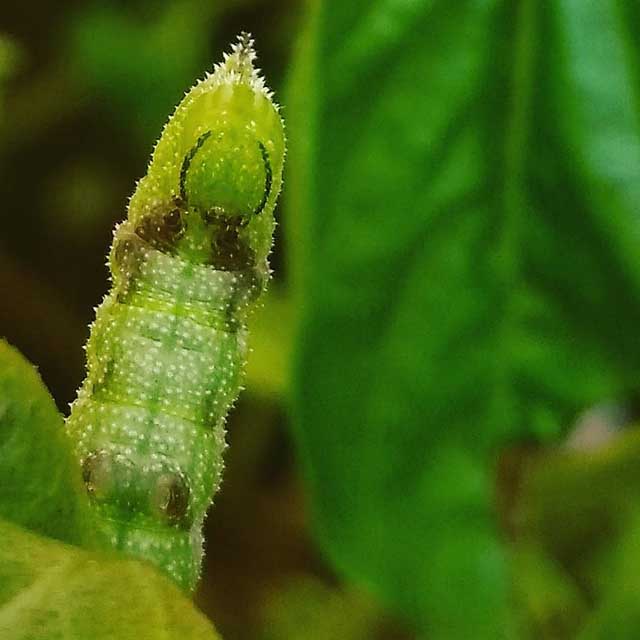
Lintneria justiciae third or fourth instar, Sao Paulo, Sao Paulo, Brazil,
on Ocimum basilicum, April 6, 2019, courtesy of Natasha Ceretti Maria,
tentative id by Bill Oehlke
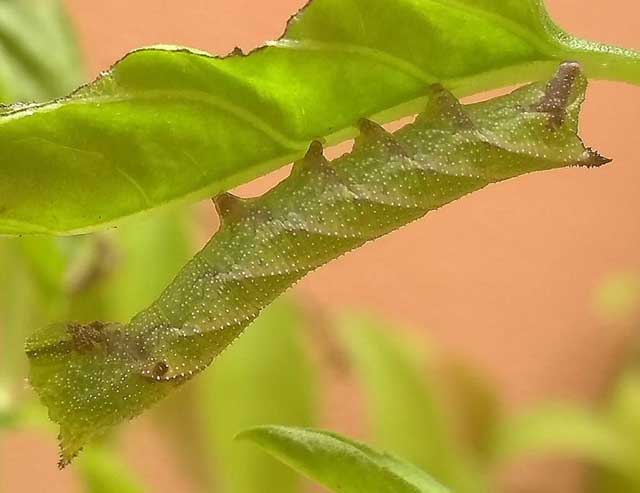
Lintneria justiciae third or fourth instar, Sao Paulo, Sao Paulo, Brazil,
on Ocimum basilicum, April 6, 2019, courtesy of Natasha Ceretti Maria,
tentative id by Bill Oehlke
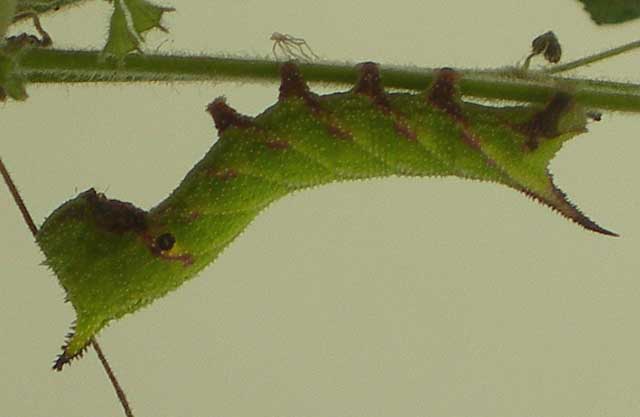
Lintneria justiciae third or fourth instar, April 19, 2009
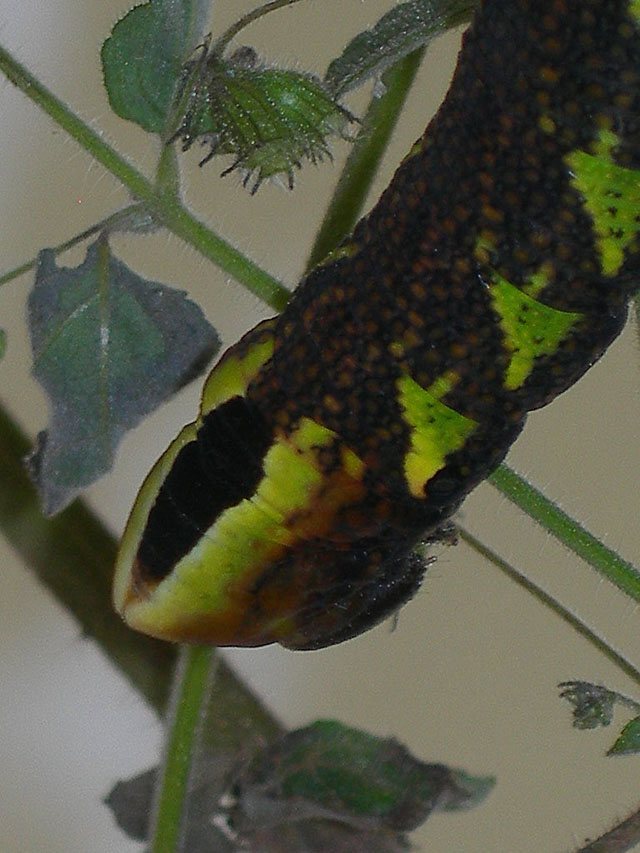
Lintneria justiciae ??, April 19, 2009
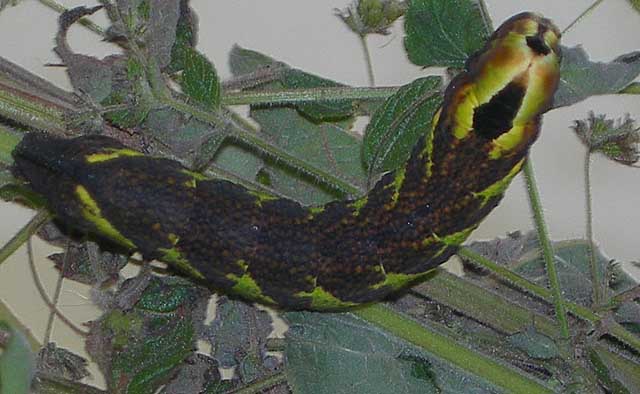
Lintneria justiciae ??, April 19, 2009
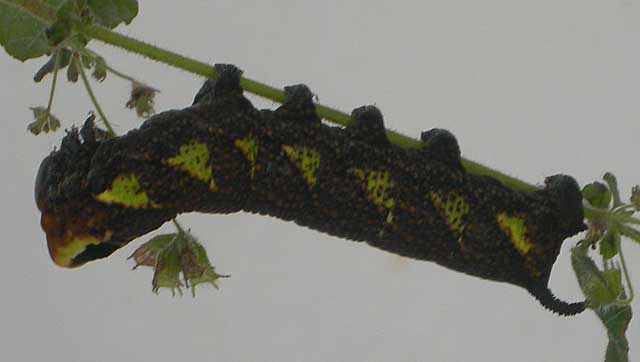
Lintneria justiciae ??, April 19, 2009
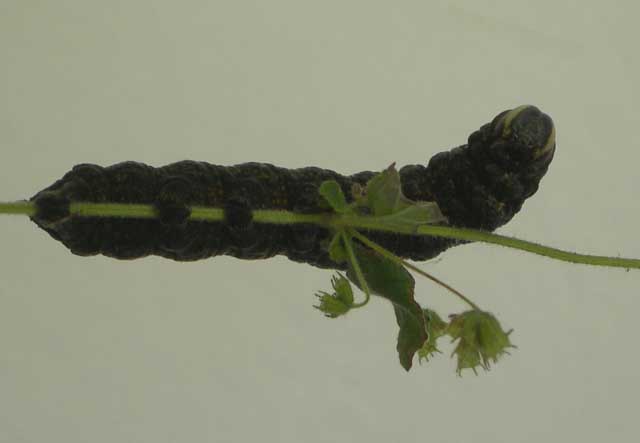
Lintneria justiciae ??, April 19, 2009
Larry reports that most of the found larvae proved to be parasitized.
Use your browser "Back" button to return to the previous page.






